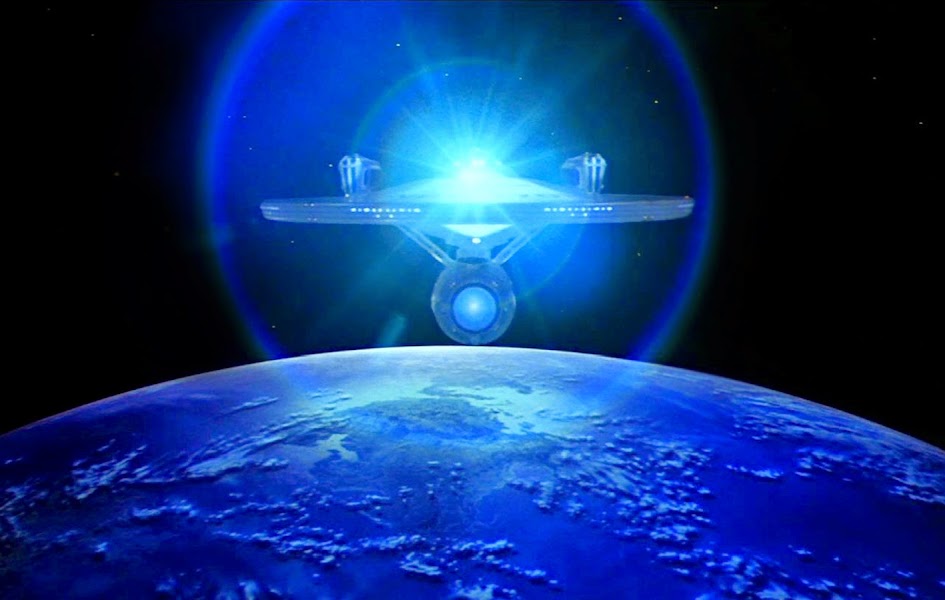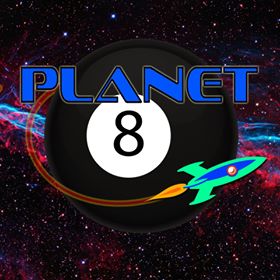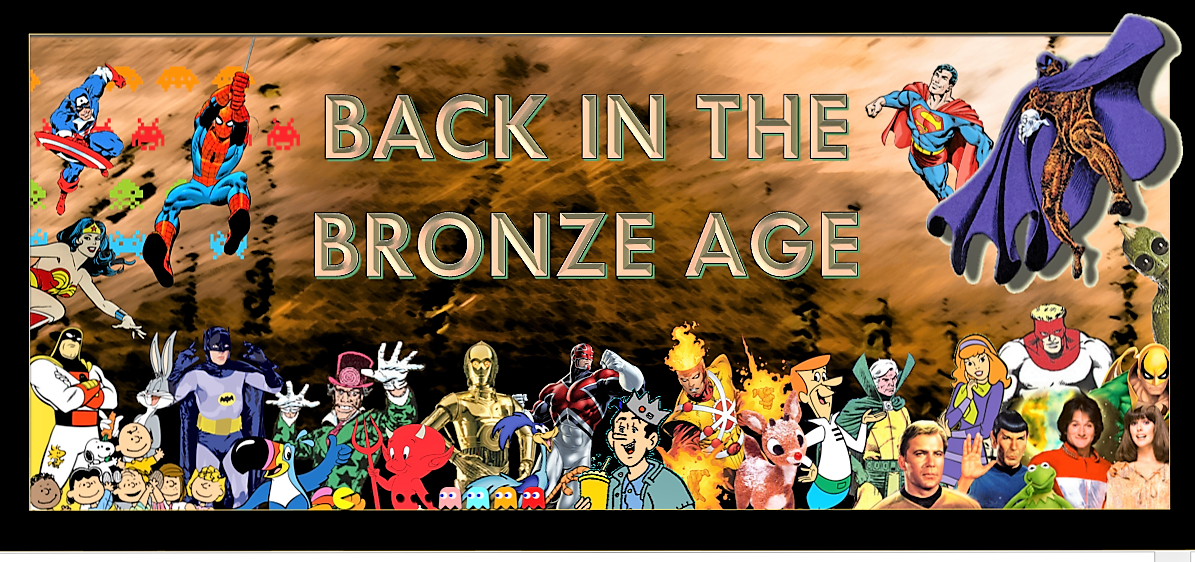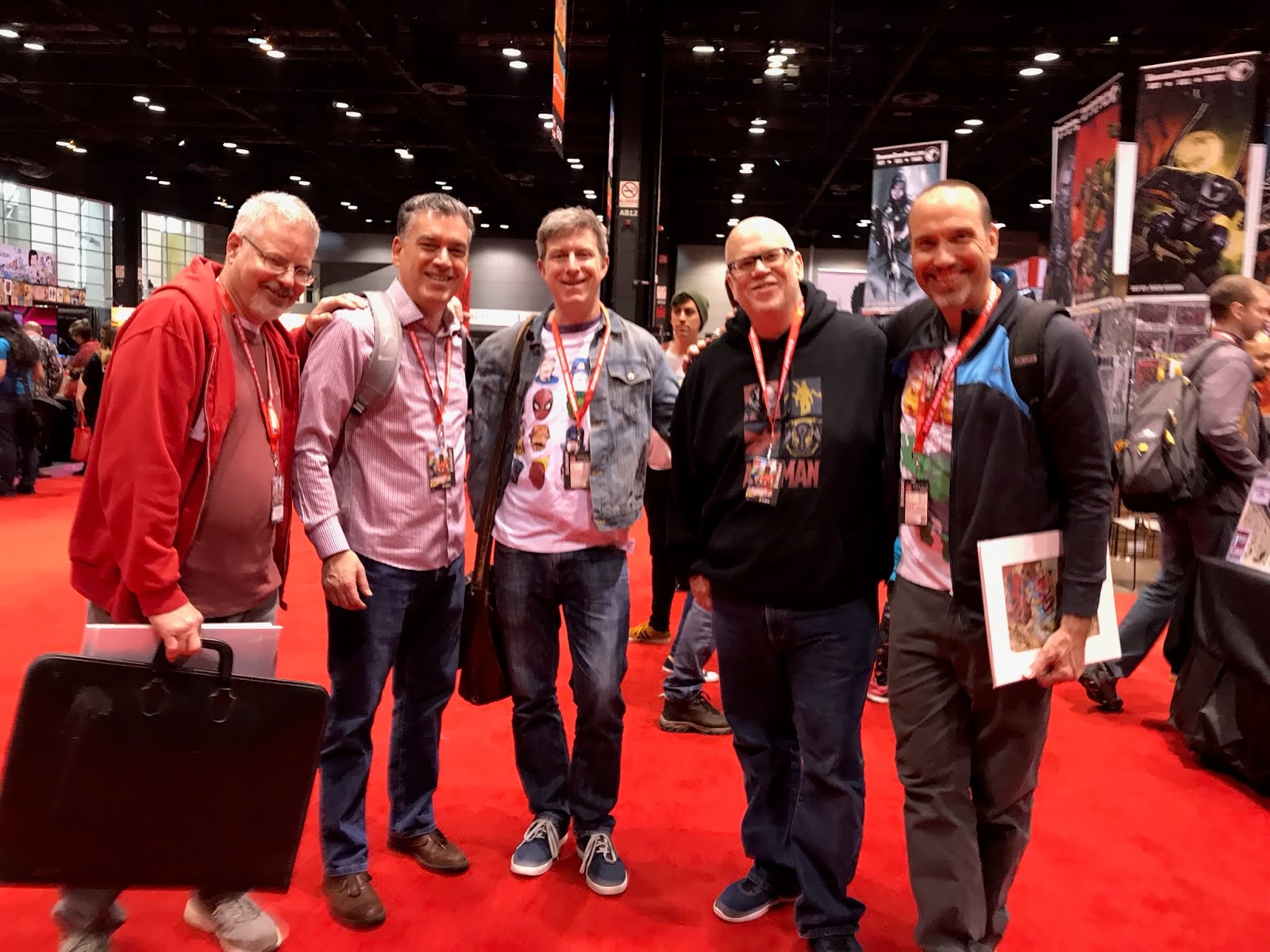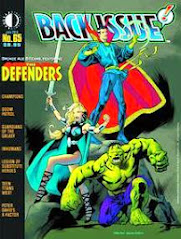Doug: In today's installment of my essay originally imagined to appear in Assembled! Volume 3, we pick up my impressions of Avengers #28, which featured the return of Dr. Henry Pym to Earth's Mightiest Heroes...
What struck me about Hank in the first half of this story was his self-doubt, almost whining about his problems. I thought, hey, here’s a guy who should be on top of the world – top-notch scientist with his own
very large research ship, Avengers founder, and with one of the coolest super powers around! Look at the Avengers of that era:

Hawkeye wasn’t in my mind much different from what I’d seen of Green Arrow, Captain America was no doubt in charge but leadership seemed to be his finest attribute, Quicksilver was a poor man’s Flash, and I’d yet to truly figure out what the Scarlet Witch could do. At that point in my readership I didn’t fully grasp the nature or intensity of Wanda’s prowess (nor for that matter did her writers, it seemed). Throw in now a guy who was 25 feet tall and strong as a tank… yeah, that’s who my seven-year old mind gravitated to, identified with in an envious way. Incidentally, giants would go on to dominate on my cool-o-meter as a youngster: Goliath, Galactus, Black Goliath, Colossal Boy… shoot – even Stilt-Man was a treat. I should also say that years later, I had to wonder if the different drugs Hank had used to create his ability to change sizes had not caused unknown side effects that may have affected him mentally.

Could that have been a cause of his self-doubt?
The second half of the story is what has caused me to admire the character and appreciate him as complex, heroic, and never-say-die. Once the Avengers arrived at the Collector’s castle, Hank (although taken aback at Hawkeye’s disrespect for Cap’s lead, and amazed at how Cap had taken ownership of the team) came to the fore, freeing his teammates from bondage and on the attack – aggressive, leading, angry, and when it looked to be over in a gas attack, lashing out with the last effort he could muster.

This Hank Pym would not be denied. Of course the kicker was on the last page when, attempting to shrink back to normal size to greet the newly freed Wasp, Hank stopped at ten feet.
And there I was. Newer readers have no idea what it was like trying to get comics in the pre-direct market days. Not only was I too young to fly solo to get to either of two local drug stores or the grocery store where we shopped, but even if I could get to one of those places there was simply no guarantee that the book I was looking for would be in stock (let alone that it had even been ordered that month). These were the days of irregular distribution at best and there were no such things as “pull lists”, store subscriptions, etc. As far as I knew, Hank was still stuck at ten feet…
Until I stumbled upon Avengers #140. I recall purchasing issue #130 myself, but for some reason I never got hold of the subsequent issues. Anyway, this cover knocked me on my pants – “Invasion of the 50 Foot Hero!” it screamed at me as I stared at the giant lying prone on the ground with two strangers acting in haste to (apparently) save him. I couldn’t get the quarter out of my pocket fast enough!
This wasn’t exactly a jumping-on issue. Talk about stepping in mid-stream! New characters, none of whom I recognized, and only the Scarlet Witch from my previous two Avengers encounters. But, I certainly did know the name of Hank Pym and his wife (?) Jan. Naturally what grabbed me about this book was what happened to Hank (now in a new outfit – did the guy change clothes like most people change their underwear?!?), as he collapsed at the beginning of the story and began to grow… and grow… and grow!

I gleaned that he’d fallen ill from a battle in the previous issue, and it seemed like he’d done it in defense of the Wasp. Thor remarked to Jan’s doctor, who had questioned Pym’s motivation for taking off after whoever this Whirlwind fellow was, “This man doth live his every moment for yon woman, doctor (page 3)!” Yep, they were talking about the Hank Pym I’d seen in that earlier Avengers comic I owned. Ultimately the story had a happy ending, and also improved my education as far as what had gone on with the team (it was about this time that I figured out what a “reprint” was, and that my other two Avengers books had been such). Although I couldn’t discern much of the Beast’s backstory (X-Men? It would be about another few months before a friend showed me a copy of a book he’d just bought –
Giant-Size X-Men #1), he was very interesting; the Vision seemed very strange. I was also excited to see that Captain America would be in the next issue.
But Hank, now Yellowjacket, wasn’t. The events of his out-of-control growth had taken a toll and forced him to a restful retirement in a hospital. This was OK to me at the time, because I was really soaking in all of the characters I didn’t really know – the Vision, Beast, and Iron Man (who had gotten his tail kicked by Thor in the #130 I mentioned). I can still recall that wonderful sense of discovery as I read #141; and that George Perez guy wasn’t too bad on the art, either! And then, an ordinarily boring trip with my mom to the grocery store lit up my day. On the magazine shelf, next to the
Car-toons and
MAD magazines, was a single copy of
Giant-Size Avengers #5 with Goliath prominently featured on the cover.

A little begging and a short trip home and I was back at it with a whole bunch of characters! Cap, Hawkeye, Quicksilver, the Scarlet Witch, Goliath, the Wasp, Thor, Iron Man, and a big guy named Hercules went up against some very colorful baddies in the longest story I’d yet seen in a comic book.
 Doug: I don't know about you, but I think it would have been really cool to have seen the Swordsman in a solo adventure book, as a sort of soldier-for-hire or adventurer -- maybe a treasure hunter. Many have commented that they enjoyed him as a bad guy in the Silver Age, and again as the loveable loser during his Bronze Age run in the Avengers. His comic book life might have been extended had he been given a try-out or some other extended run in a book he could call his own.
Doug: I don't know about you, but I think it would have been really cool to have seen the Swordsman in a solo adventure book, as a sort of soldier-for-hire or adventurer -- maybe a treasure hunter. Many have commented that they enjoyed him as a bad guy in the Silver Age, and again as the loveable loser during his Bronze Age run in the Avengers. His comic book life might have been extended had he been given a try-out or some other extended run in a book he could call his own.  Giants are really eye-catching on covers, and the whole Science Police angle could have been used to some effect. Obviously various Legionnaires could have guest-starred, and to some extent writers and artists could have exploited a sort of Gulliver's Travels motif as Gim moved throughout the United Planets.
Giants are really eye-catching on covers, and the whole Science Police angle could have been used to some effect. Obviously various Legionnaires could have guest-starred, and to some extent writers and artists could have exploited a sort of Gulliver's Travels motif as Gim moved throughout the United Planets. 






































